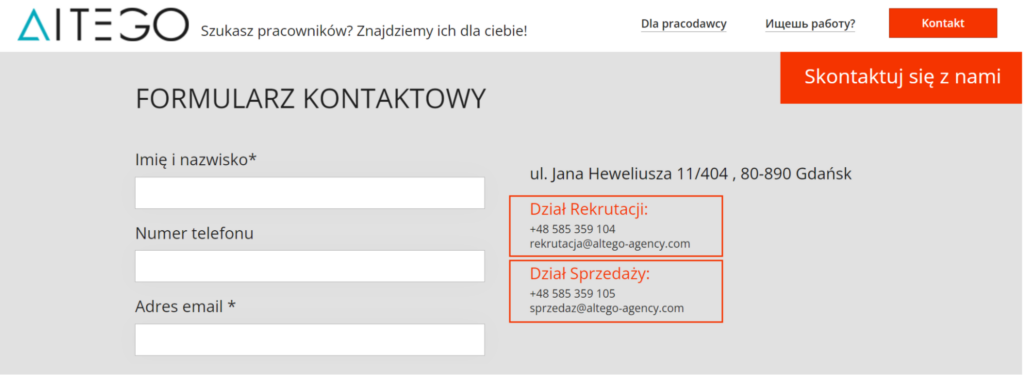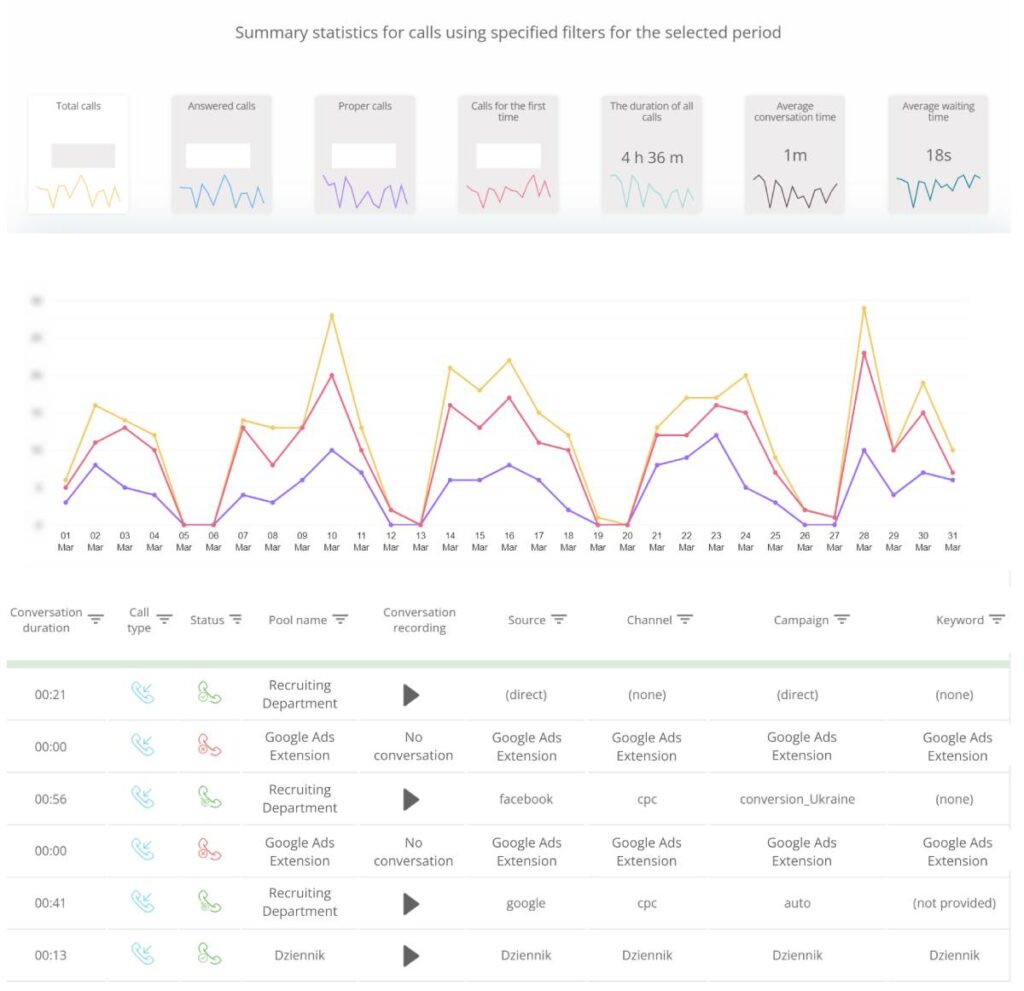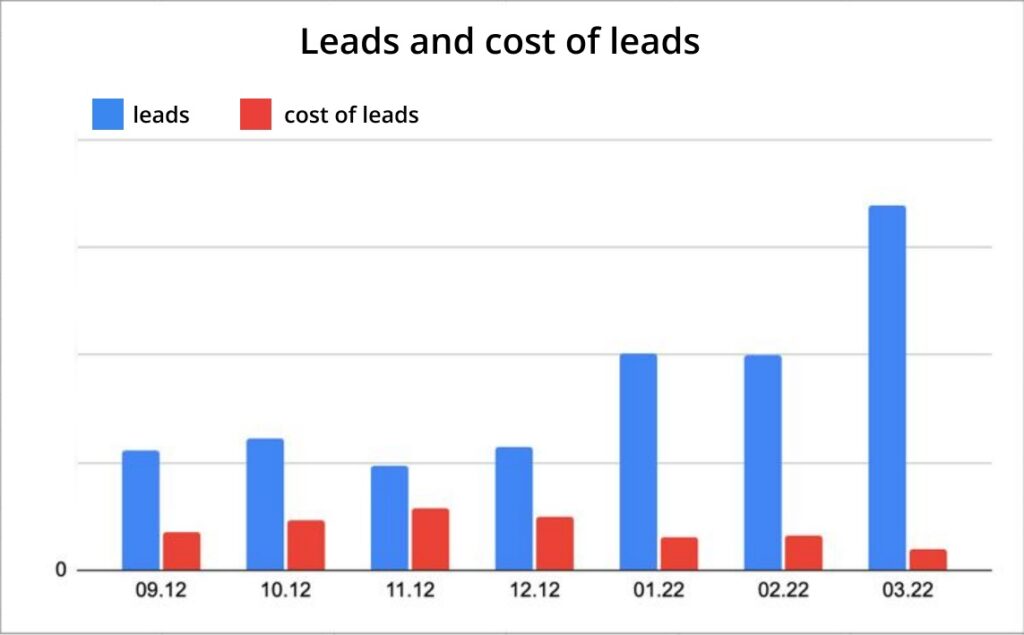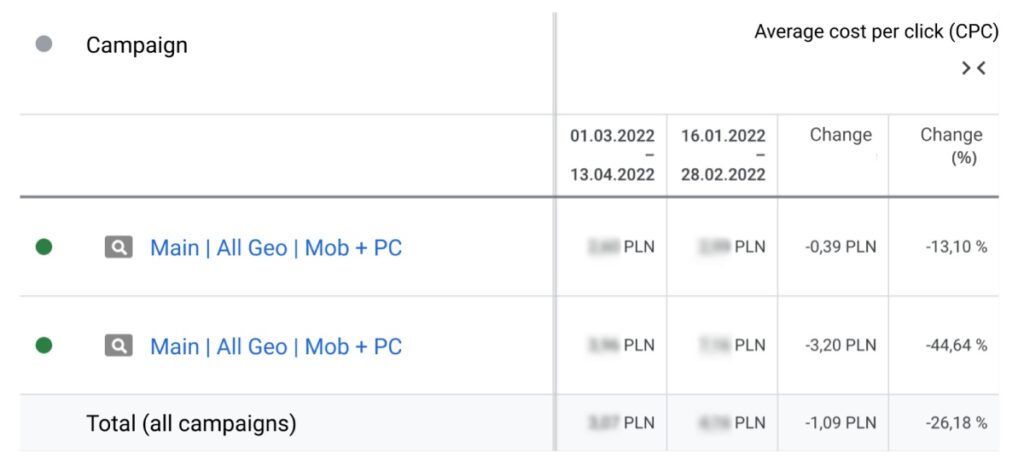In the manufacturing and food industry, the staff is often hired “in bulk”. And for this it is easier to contact an employment agency that will quickly find the right employees. But how can such an agency advertise itself among buiseness? Alina, a specialist in contextual advertising Google Ads, tells how the Ringostat platform helps to promote and increase the effectiveness of campaigns.
How the agency works and promotes
The client is Altego Agency with an office in Gdansk. The scope of the agency’s activities is divided into two areas:
- B2C — assistance in employment in Poland for residents of Eastern Europe;
- B2B — recruitment of employees for Polish business.
Altego Agency is a member of the National Convention of Employment Agencies and the Association of Employment Agencies (SAZ). The main region in which the company specializes is Gdańsk, an industrial city with a high demand for labor. Applicants are also employed in Warsaw, Gdynia, and Elbląg.

Among the B2B clients of the company: Ziaja — a well-known cosmetics brand, bakeries, food manufacturers, hotel chain, recycling plant, and many others. Employers highly appreciate the work of the agency. 96% of them pass the probationary period, and 9 out of 10 companies make repeated, mass applications for recruitment.
Of course, Altego Agency is not the only player in the employment market in the region. Therefore, it has to compete for the attention of potential customers actively. And if job seekers are found through advertising on Facebook, then B2B customers are searched for through Google Ads.
What goals did the client set before connecting Ringostat
The advertising specialist immediately realized that in the field in which the company operates, customers will most often call rather than apply through other channels. This is always the case in niches where speed and trust are important for the provision of services.
- On the one hand, when a company needs to hire staff, it will not delay and will call rather than fill out a form or write a letter. After all, this way you can quickly find out the answers to questions and immediately leave an application.
- On the other hand, both B2B and B2C clients need to make sure that the company is trustworthy. Therefore, they usually prefer to communicate by “voice”. The customer pays attention to the manner of communication of the manager, whether he can provide evidence of the reliability of the agency, competently present its advantages, etc.
All this leads to the fact that calls are becoming the main channel of leads. And if the agency has launched advertising, it is logical to evaluate its effectiveness in the presence of calls from the target audience. For this purpose, call tracking is usually used. This tool shows which source, channel, campaign, and keyword led to each call.

Therefore, from the very beginning, I suggested Altego Agency connect call tracking. I had no question about which call tracking service to choose. I started working with the Ringostat platform four years ago and was very satisfied. Most of all, I like the ease of use and professional technical support, which is always in touch.”
There were two tasks before connecting Ringostat:
- tracking the number of calls — to understand whether the advertising works and what kind of advertising;
- optimization of advertising based on call data — in other words, it was necessary to find out what to change in the campaigns so that they brought more customers.
Identification of online call sources
First, let’s briefly explain how call tracking works in general:
- the company installs the Ringostat code on its website or is assisted by the platform’s technical support;
- this code replaces the company’s phone numbers posted on the website;
- each substitute phone number is assigned to a specific advertisement — it acts as an indicator of the source from which the customer called;
- if several users visit the site at once, they will see different replacement numbers;
- after the call, Ringostat compares which number the client called and which advertisement he clicked on;
- for example, this is how you can understand that the client called from the campaign in Google Ads “Ukraine” for the keyword “employment agency”;
- all information about calls is collected in reports — up to the keyword entered by the user.
Now let’s get back to how call tracking is set up in Altego Agency. As mentioned earlier, the main goal of a context specialist is to attract businesses that will conclude an employment contract with the agency. Two Google Ads campaigns are set up for this purpose:
- one is intended for users who google employment agencies;
- the second is for those who are looking for workers.
When users visit the site from such advertising, they see the replacement numbers in the “Contacts” section. The sales department, which communicates with employers, has its group (pool) of replacement numbers, and the recruitment department has its own. This is necessary to clearly understand who exactly is calling — the business or the employer.

After the client dials the replacement number, the call is automatically redirected to the mobile phone of the rep. In total, two managers receive calls: one in the sales department and one in the hiring department.
In addition, the advertising specialist specifies the replacement phone number directly in the Google Ads ad. The “Phone Number” extension is used for this purpose. All Internet users see the same number in such an ad — this is called static call tracking. And if you call this number, then Ringostat will clearly “understand” that the client came from the Google search results without even visiting the site.


How the company identifies offline call sources
Spoofed call tracking numbers can also be placed on offline advertising to understand how it works. Thus, Altego Agency once published an article in “Dziennik” magazine and specifically placed a spoof phone number in it.
Even before the war, the agency placed a banner in a small Ukrainian town to recruit workers directly in Ukraine. It also had a spoofed number on it to gauge whether such advertising was popular. After the war, the agency plans to continue this practice by installing offline advertising in several Ukrainian cities.
How a contextual advertising specialist works with call data
Alina regularly checks the call log, where all information about calls with their advertising sources is collected. Below is an example of the data that can be seen in the call log. There, the head of the company can listen to audio recordings of conversations to evaluate how managers communicate with customers:

Alina analyzes the keywords used by people. If some queries lead customers, but they were not in the campaign settings, the specialist adds them. Sometimes it happens vice versa, and at first glance, a relevant keyword brings “garbage” traffic. Or calls may come from cities where the agency does not employ people. Such settlements are added to the exceptions in the advertising settings.
Call tracking data allows making advertising more effective. Thus, the specialist trains Google Ads smart campaigns based on call data.
Smart Display campaigns are automated campaigns for managing contextual advertising in Google Ads. The advertising system itself determines to whom and where to show the ad, how much to pay per click on the ad, and how the ad will look during the display. By the number of calls, the system “understands” which ads bring interested people and assigns rates based on this.

The advertising specialist uploads the call log to a Google spreadsheet, which is then used by the sales department.
- The sales rep indicates whether the client who applied is a target client — that is, a business, not a potential employee. After all, customized Google Ads campaigns should lead B2B customers.
- The sales rep leaves a comment on what issue the client addressed. So he can record what exactly interested a particular lead and understand what to communicate with him next time.
- The information on which number the client called is analyzed. The advertising specialist compares whether the person contacted the appropriate department. For example, sometimes it happens that the business mistakenly called the hiring department. And in fact, he is a targeted lead brought by Google Ads advertising.

Results

Yes, the number of calls increased also because of the war — the flow of refugees and the demand for their work increased. But this result would not have been achieved if the campaigns had not worked effectively enough.
Currently, the agency receives 205% more leads than in early December 2021, and agency reduced the cost of B2B leads by 43%. This is the result of the agency analyzing the return on advertising, including in terms of calls. And based on this, it optimizes ads and redistributes budgets. It is also the effect of the fact that smart campaigns automatically learn from call data.

The cost per click has decreased — on average by 26%. This is because the advertising specialist knows which keywords and ads are less effective and can disable some of them.

Let’s summarize with the opinion of Alina, Google Ads contextual advertising specialist:
“Ringostat as conversion tracking is one of the most important points for optimizing advertising campaigns. Without this data, adequate work of a specialist is almost impossible. Those who work with smart bid strategies understand this. In addition, without information about leads, it is difficult to make any decisions about scaling this or that type of advertising. Therefore, the connection of call tracking is one of the main points of discussion before the start of cooperation”.

